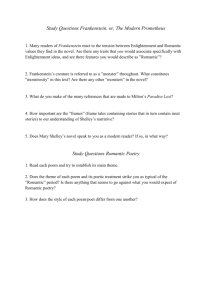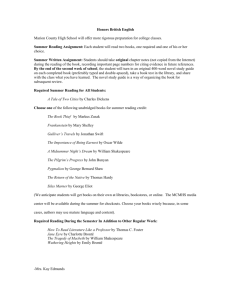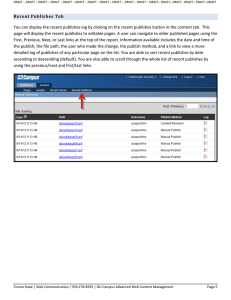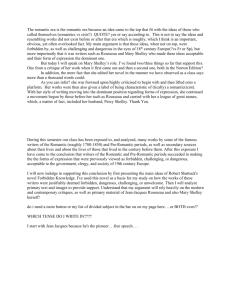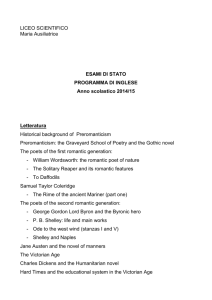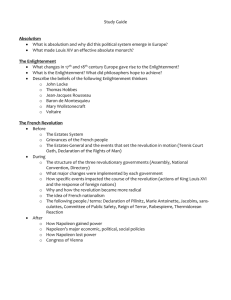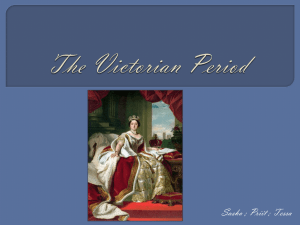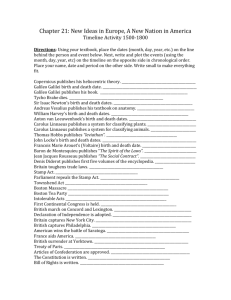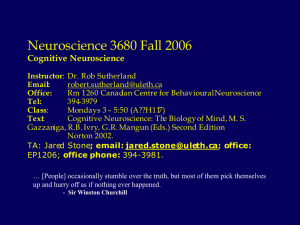Enlightenment and the Romantic Period
advertisement
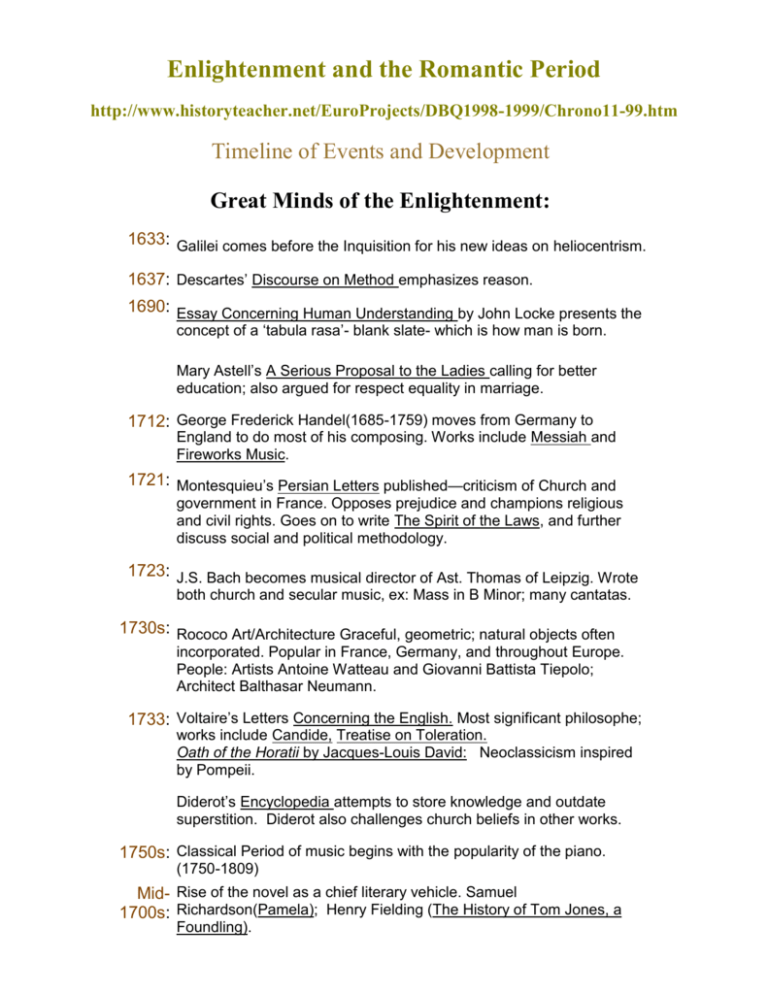
Enlightenment and the Romantic Period http://www.historyteacher.net/EuroProjects/DBQ1998-1999/Chrono11-99.htm Timeline of Events and Development Great Minds of the Enlightenment: 1633: Galilei comes before the Inquisition for his new ideas on heliocentrism. 1637: Descartes’ Discourse on Method emphasizes reason. 1690: Essay Concerning Human Understanding by John Locke presents the concept of a ‘tabula rasa’- blank slate- which is how man is born. Mary Astell’s A Serious Proposal to the Ladies calling for better education; also argued for respect equality in marriage. 1712: George Frederick Handel(1685-1759) moves from Germany to England to do most of his composing. Works include Messiah and Fireworks Music. 1721: Montesquieu’s Persian Letters published—criticism of Church and government in France. Opposes prejudice and champions religious and civil rights. Goes on to write The Spirit of the Laws, and further discuss social and political methodology. 1723: J.S. Bach becomes musical director of Ast. Thomas of Leipzig. Wrote both church and secular music, ex: Mass in B Minor; many cantatas. 1730s: Rococo Art/Architecture Graceful, geometric; natural objects often incorporated. Popular in France, Germany, and throughout Europe. People: Artists Antoine Watteau and Giovanni Battista Tiepolo; Architect Balthasar Neumann. 1733: Voltaire’s Letters Concerning the English. Most significant philosophe; works include Candide, Treatise on Toleration. Oath of the Horatii by Jacques-Louis David: Neoclassicism inspired by Pompeii. Diderot’s Encyclopedia attempts to store knowledge and outdate superstition. Diderot also challenges church beliefs in other works. 1750s: Classical Period of music begins with the popularity of the piano. (1750-1809) Mid- Rise of the novel as a chief literary vehicle. Samuel 1700s: Richardson(Pamela); Henry Fielding (The History of Tom Jones, a Foundling). 1756: Birth of Wolfgang Mozart. Reached epitome of opera, symphony and concerto. Great operas include Marriage of Figaro, Don Giovani, The Magic Flute. 1762: Rousseau’s The Social Contract. Introduces background of democratic ideas: General Will of the people; equality and freedom. Other works include Emile (on education of the ‘natural man’) 1776: Adam Smith’s On The Wealth of Nations introduces the concept of laissez-faire capitalism. 1790s: Haydn (1732-1809) visits England and is introduced to the public concert. Goes on to write The Seasons and other masterpieces. 1792: Mary Wollestonecraft’s The Vindication of Rights of Women successfully compared slavery to the domination of women, using the Philosophes’ ideas against them. Great Minds of the Romantic Period: 1798: Coleridge and Taylor publish Lyrical Ballads. 1800: The beginning of composer Ludwig von Beethoven’s creative work. One of his significant pieces include Eroica, which was less controlled and displayed more emotion than Classical music had in prior years. 1800: Volta creates the first battery. Chopin wrote pieces such as Nocturnes and polonaises reflective of the period. 1802: The Genius of Christianity by Chateaubriand incorporates Christianity into Romanticism. Haiti, led by Toussaint L’Ouverture, rebels against French rule. 1803: J.M.W. Turner’s Calais and Pier are exibited. France occupies Hanover, Germany. 1804: Napoleon declares himself Emperor of France. 1807: Thomas Moore’s Irish Melodies is published. In the U.S., Robert Fulton produces the first steamboat. 1808: Pompeii is excavated. This is indicative of revived interest in classical civilization. 1810: Simon Bolivar leads revolutions against Spain in South American nations such as Argentina, Bolivia, and Colombia. 1812: Lord Byron publishes Childe Harold’s Pilgrimage, an autobiographical novel which portrays the antagonist as a Romantic hero. 1813: The Waltz is accepted in London ballrooms, thus ushering in a new era of more relaxed socializing and new music. Also, Jane Austen publishes Pride and Prejudice, her most well-known novel, among others including Sense and Sensibility, Persuasion, Emma, and Northanger Abbey. 1814: George Stevenson produces the first steam locomotive, paving the way for easier travel and production. Sir Walter Scott publishes Waverley. Napoleon is banished to Elba. 1815: Catholicism and religion in general are more accepted than they were in the more ration-based Enlightenment. Gothic architecture is used in cathedrals, and more emotional Protestant movements are seen. Napoleon returns to rule for 100 Days, then is exiled to St. Helena. 1817: William Hazlitt publishes Characteristics of Shakespeare’s Play, significant of renewed interest in literature. 1818: A censored edition of Shakespeare’s works is published. 1820: Percy Bysshe Shelley’s Prometheus Unbound displays man’s struggles in society. 1821- Successful Greek revolution. Inspires Eugene Delacroix (1798-1863) 1832: to create a painting which captures the revolutionary spirit that characterizes this era. 1822: In Austria, Schubert begins work on his 8th Symphony- known as the Unfinished Symphony. 1826: Mendelssohn writes Overture to A Midsummer Night’s Dream Goethe writes the Romantic novel, The Sorrows of the Young Werther. 1831: Victor Hugo publishes The Hunchback of Notre Dame. Mary Wollestonecraft Shelley’s Frankenstein presents man and nature. Malford Wiliam Turner produced many paintings with natural scenes, in which he created mood. He writes for Shakespeare’s plays. 1848: Uprisings in Italy, France, Germany, Belgium, Austria, and Italy reflect the spirit of challenge to the Old Regime that marks this period.
